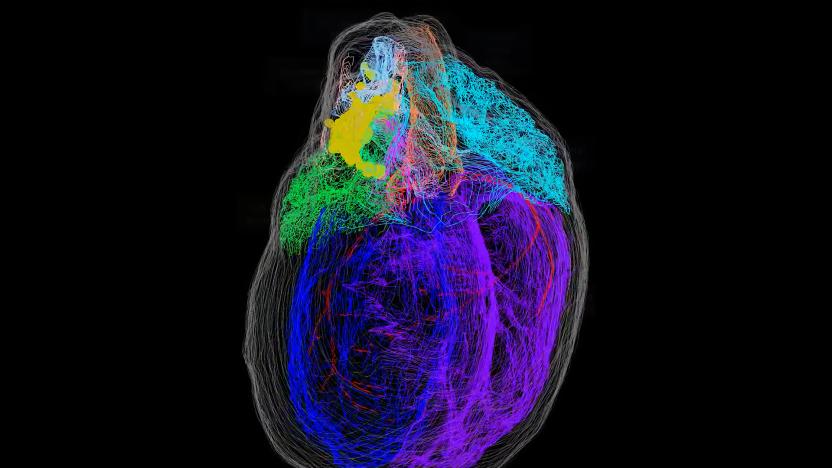3D scan
Latest

University of Adelaide built a robot spider to scan Australia’s Naracoorte Caves
In the southeast of South Australia lie the Naracoorte Caves.

Creating the first 3D map of the heart's 'brain'
The heart has its own mini-brain called the intracardiac nervous system (ICN), which fine tunes external autonomic signals and keeps the heart pumping smoothly. The ICN consists of a layer of neurons distributed around the heart that control various cardiac functions.

The Smithsonian is 3D-scanning its collection for future generations
The Smithsonian has been experimenting with 3D scanning for some time now, using tools like laser arm scanners to map models of whale fossils and other ancient artifacts. Now the museum is utilizing the technology to preserve its collection for posterity. Its "laser cowboys" Vince Rossi and Adam Metallo are working full-time to record items for future generations, as part of an extensive effort to digitize 14 million prioritized objects (a list that also includes artwork and lab specimen). After the break, check out a video of the team working to preserve a digital copy of the Philadelphia gunboat, America's oldest fighting vessel.

3D scanner app captures models using iPhone camera
Here's a cool addition to the "iOS-devices-can-do-just-about-anything" list: using a US$0.99 app to turn your iPhone 4, iPad 2 or latest-generation iPod touch into a 3D scanner, replacing hundreds of dollars worth of last year's technology. Trimensional was developed by Grant Schindler, a research scientist in the School of Interactive Computing at Georgia Tech's College of Computing. It uses the device's screen to light the object being scanned from four different directions, allowing a 3D model to be produced. Originally, users could only email their scans or send 3D animations, but now Schindler has added an in-app upgrade for a few dollars that allows you to export the data to CAD programs or 3D applications. "You can just have fun with it, or if you work with 3D models, you can use it professionally," Schindler said. You won't get the same precision results you'd expect from a professional 3D scanner, but then again, it is less than a dollar. Check out some of the images of creations that users have already produced. Cool. [Via Slashdot]

Creator of ProFORMA 3D scanning system talks details, availability
Still a bit curious how the ProFORMA system developed at Cambridge University can turn any old webcam into a fairly advanced 3D scanner? Then settle in for a few minutes, as the researcher behind the project, Qi Pan, has taken a bit of time to chat with the Shapeways blog about the how the system came to fruition and its potential availability to the public. Interestingly, he actually started out trying to model outdoor scenes, but moved to smaller objects after discovering that the processing power required was beyond his reach. That led to about a year and half of work on the current system, which works in two stages: the first being a tracker that works out the position and orientation of the object relative to the camera, and the second being the reconstruction stage, which seems to be as effortless to use as it is complicated to explain. Perhaps the best news, however, is that Qi says he soon plans to release a Linux-based demo to the general public, and a Windows version shortly thereafter.

Motion capture gets slightly less embarrassing
It looks like the profession of motion capture artist could soon become a slightly more dignified one, with one upstart company doing away with the trademark spandex suit and ping-pong balls in favor of a come as you are approach. That bit of of freewheelin' technology comes to us from Organic Motion, who showed off their wares at the big Games Developers Conference in San Francisco. According to the company, instead of relying on reflections from a few markers placed on a person's body, its system automatically visualizes and captures thousands of natural points on a subject, turning it into a complete 3D scan in real-time. On the downside, the current implementation of the technology (set to launch later this year) can only scan one person at a time, although a version that scans two people is apparently on track for 2008. On a related front, a team from Germany's Max Planck Institute for Computer Science have developed a system that can scan a high-resolution 3D image of a person and quickly turn it around into a model ready to be animated or, for instance, imported as an avatar into a game. It appears that it's slightly further down the line, however, with no indication given as to when, if ever, we might see it commercialized.Read - Newsweek - Level Up, "Organic Motion's Marker-Less Motion Capture"Read - New Scientist, "Animation tool puts you in the frame, or the game"



